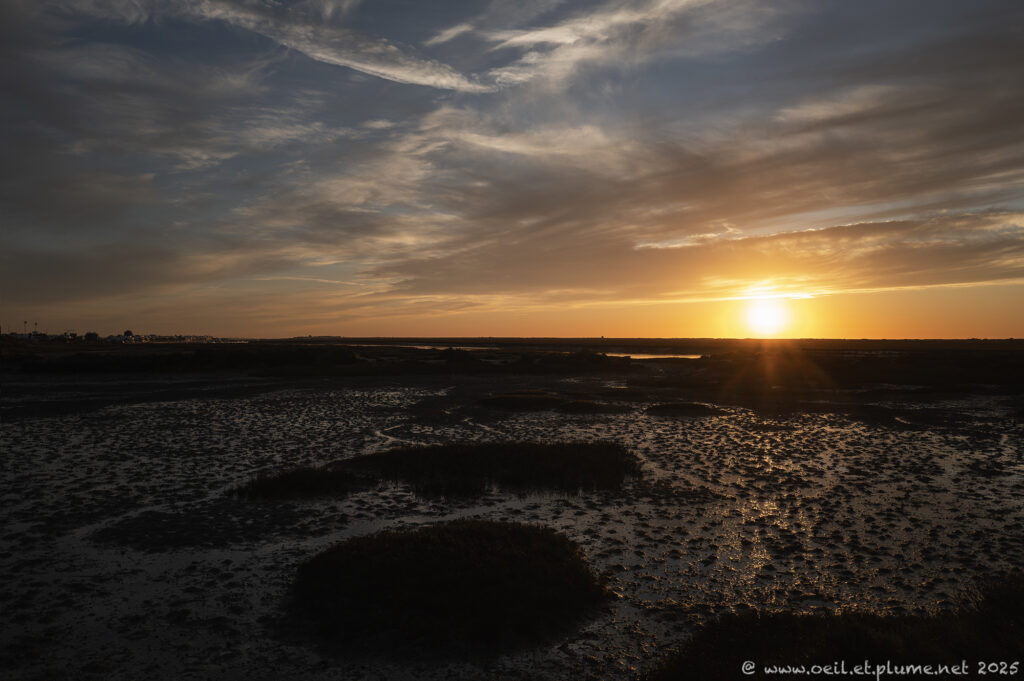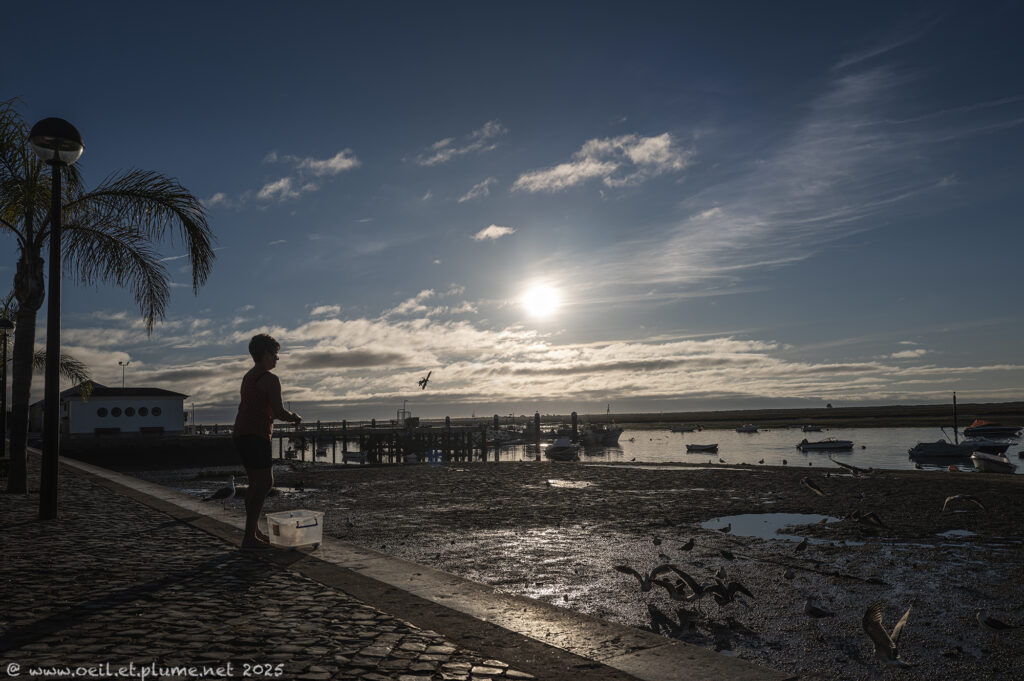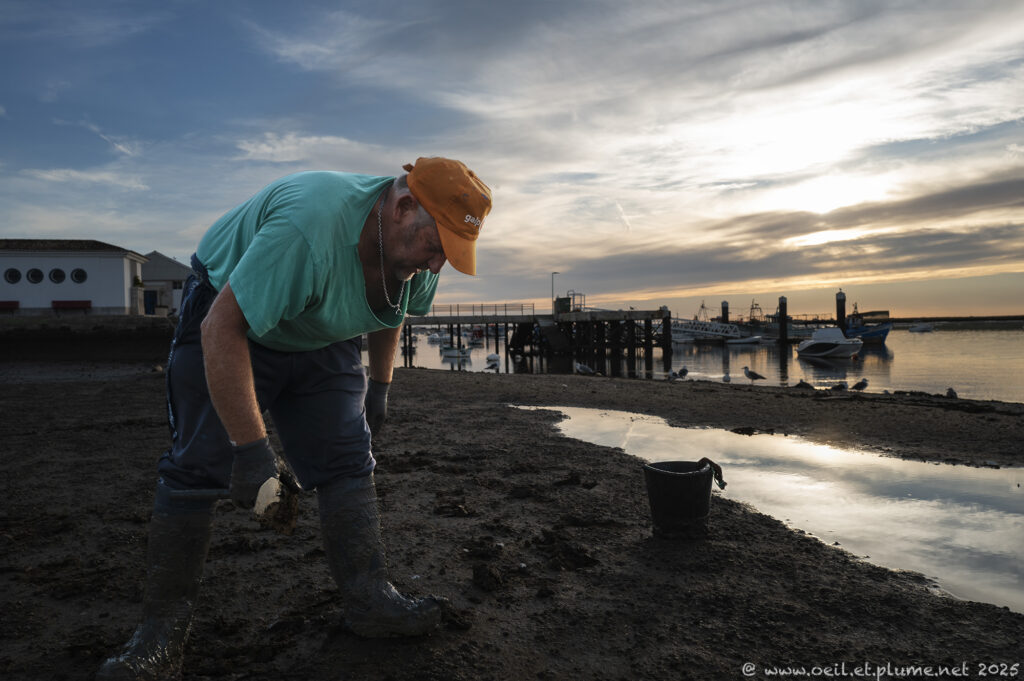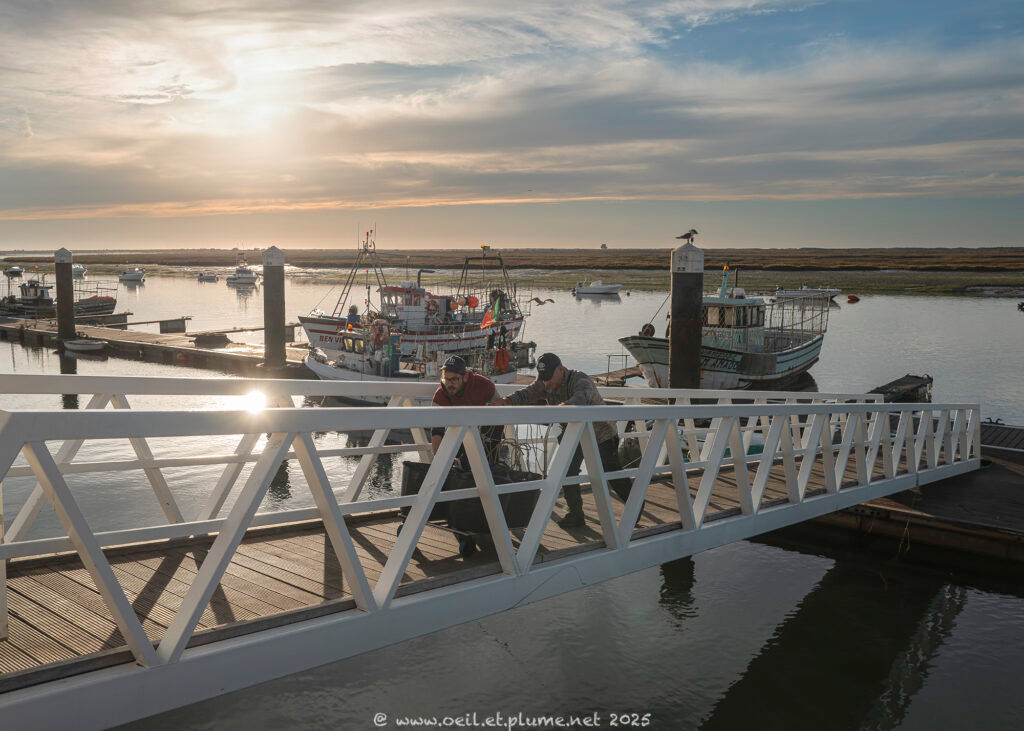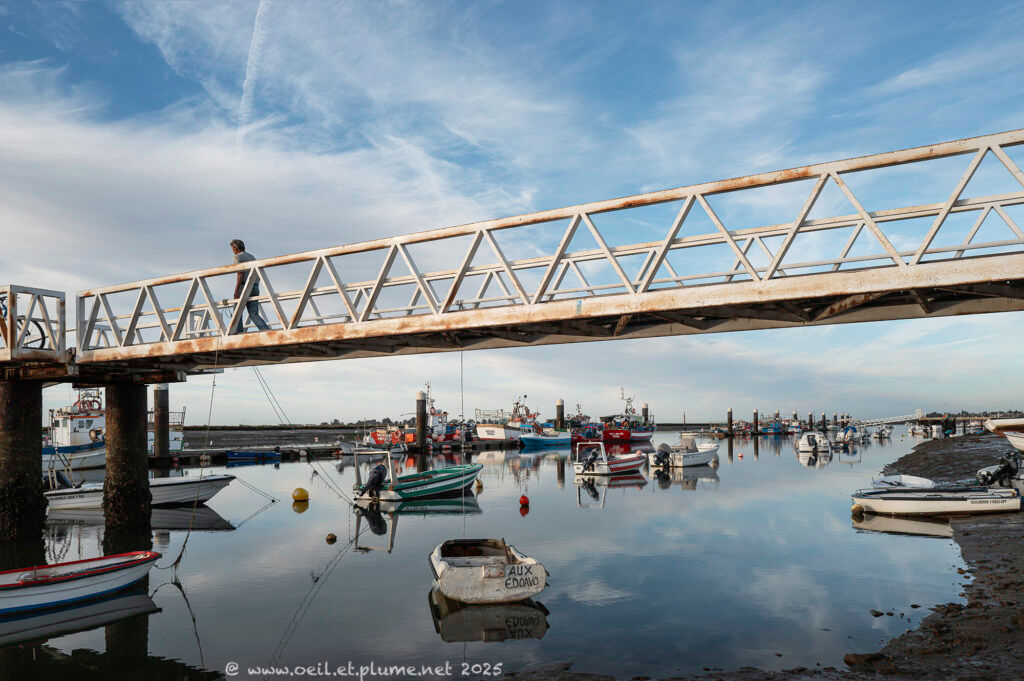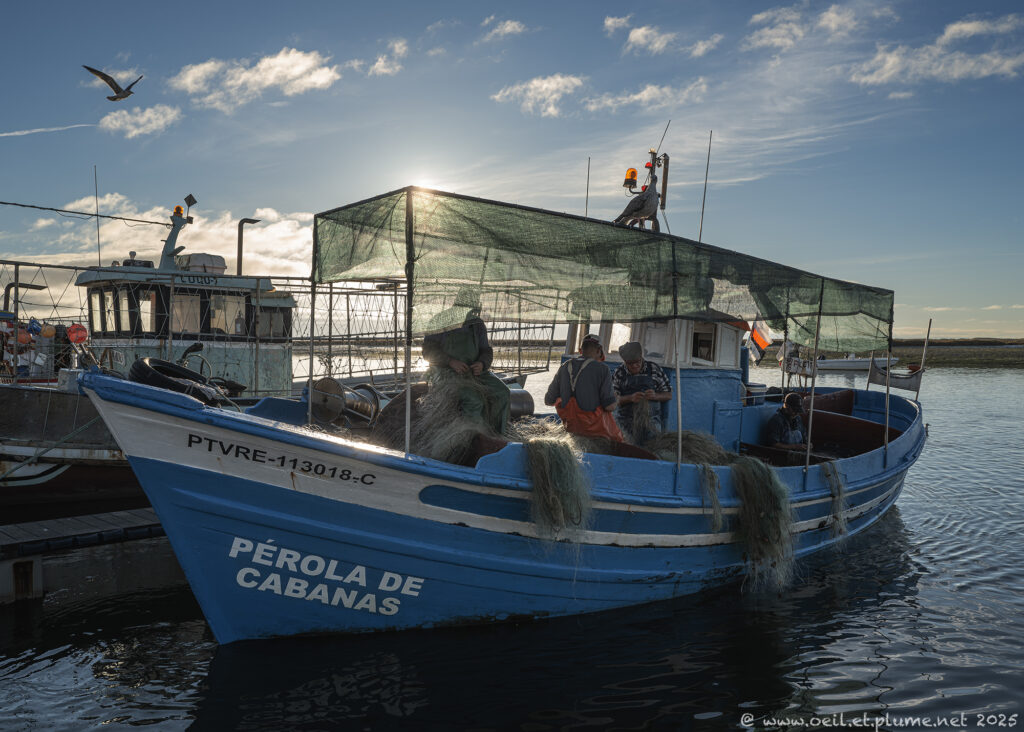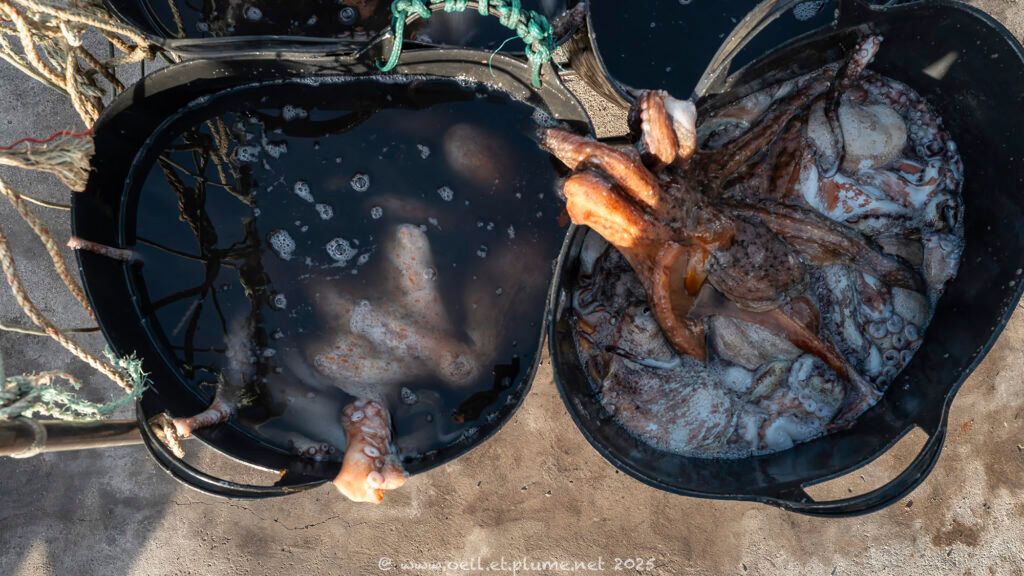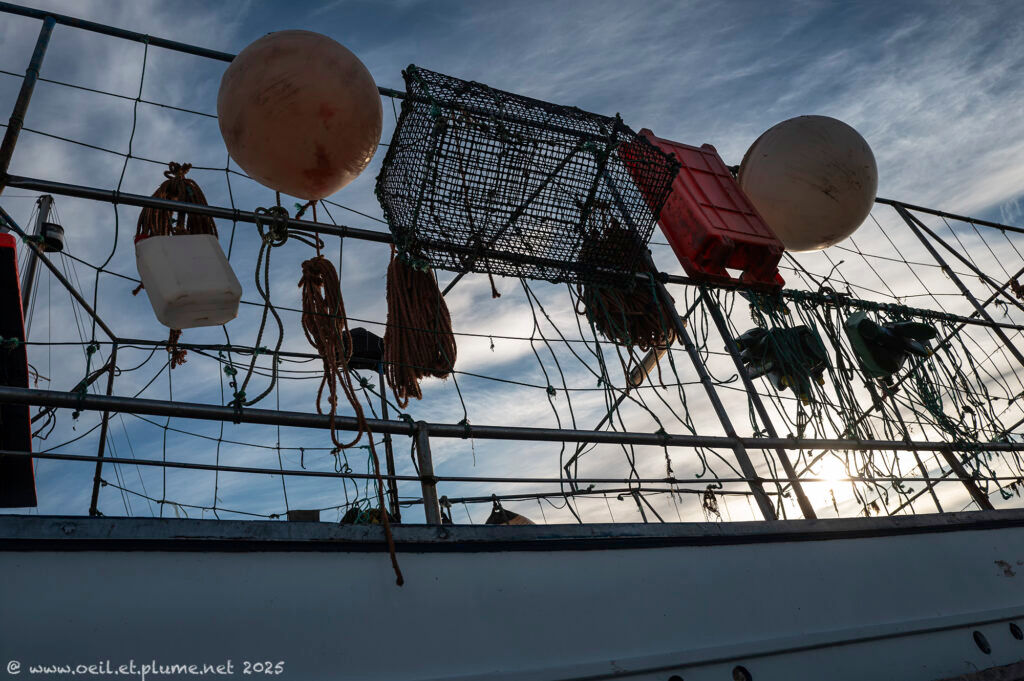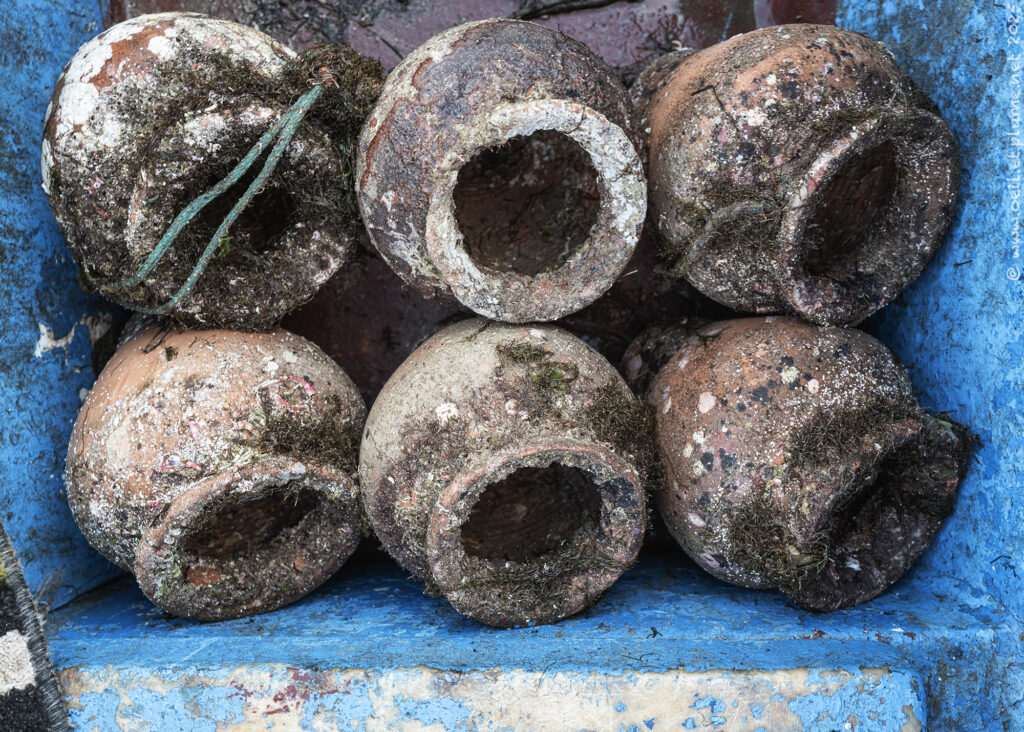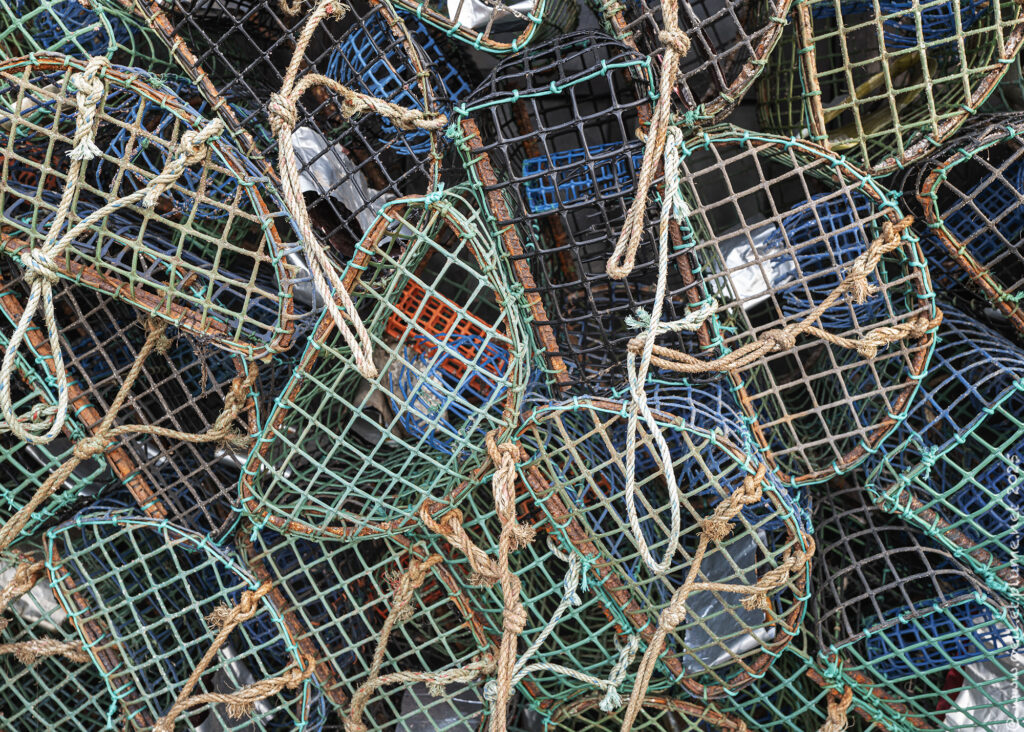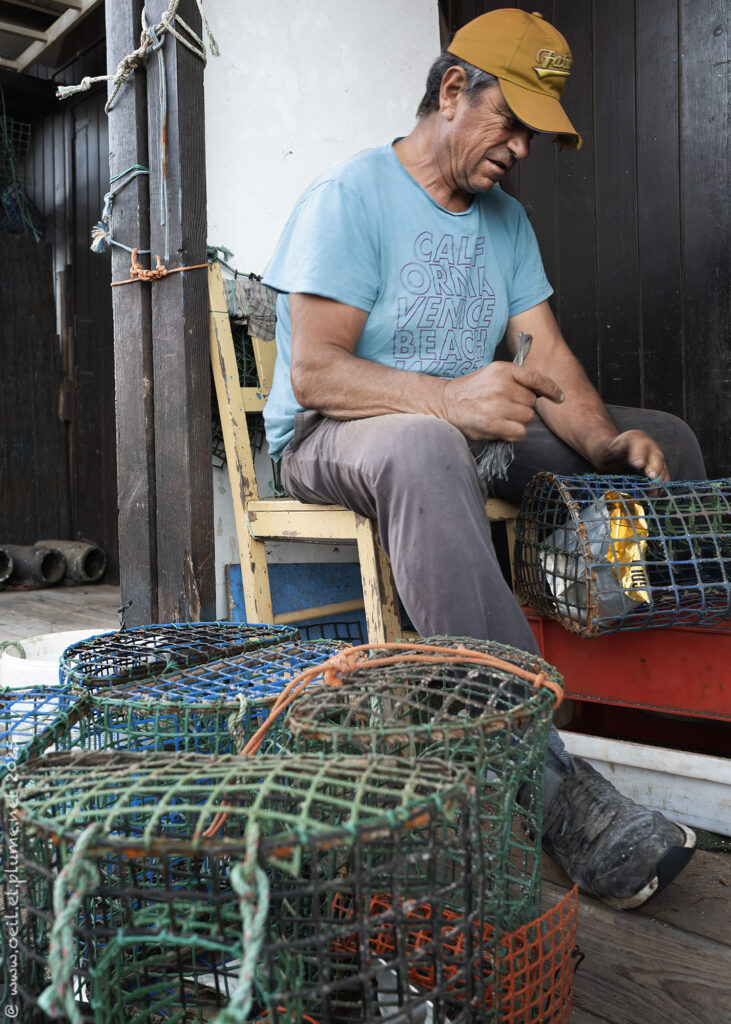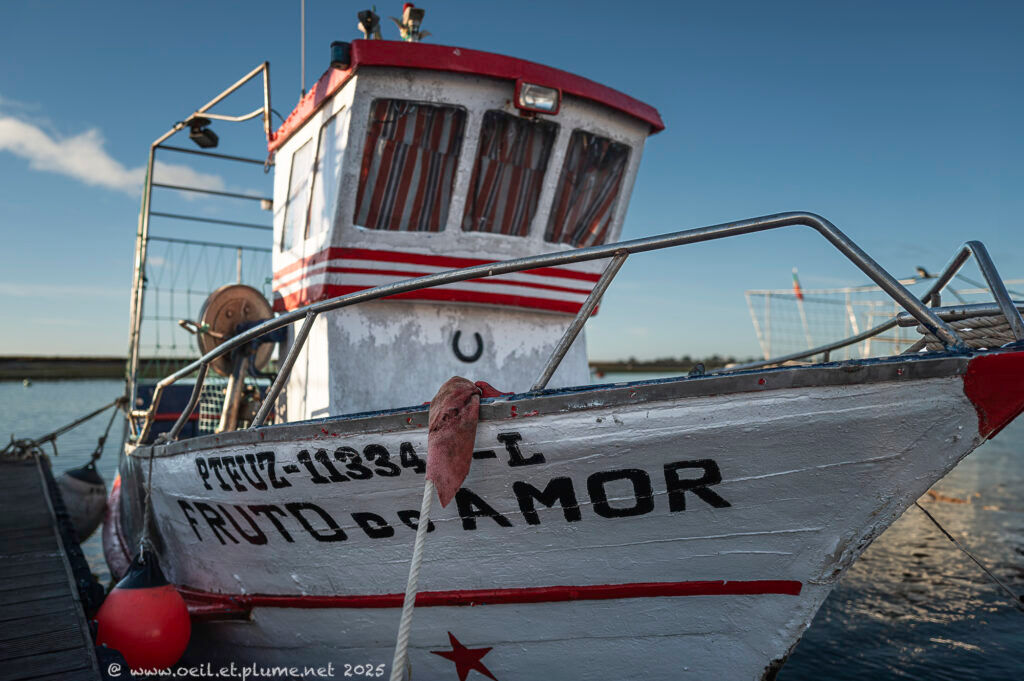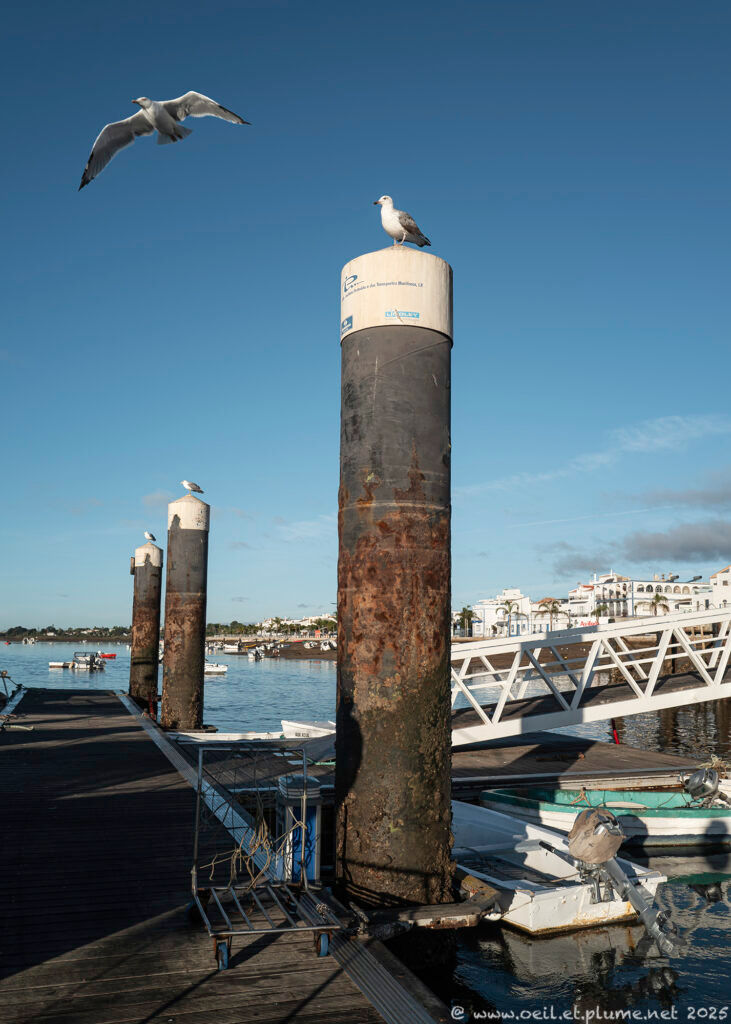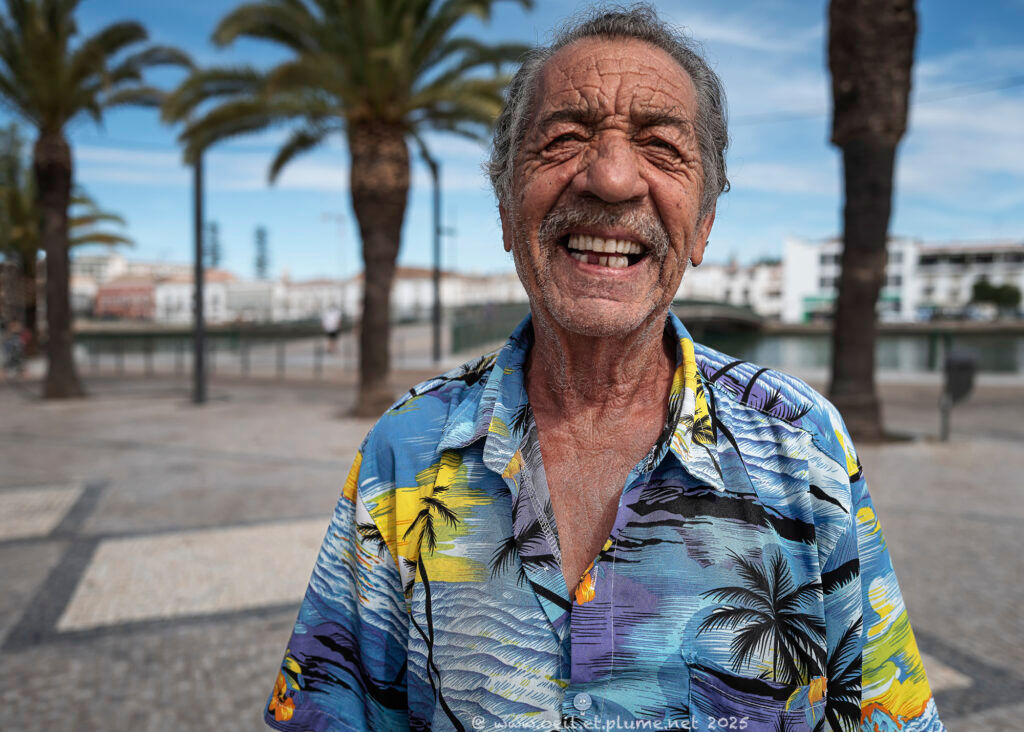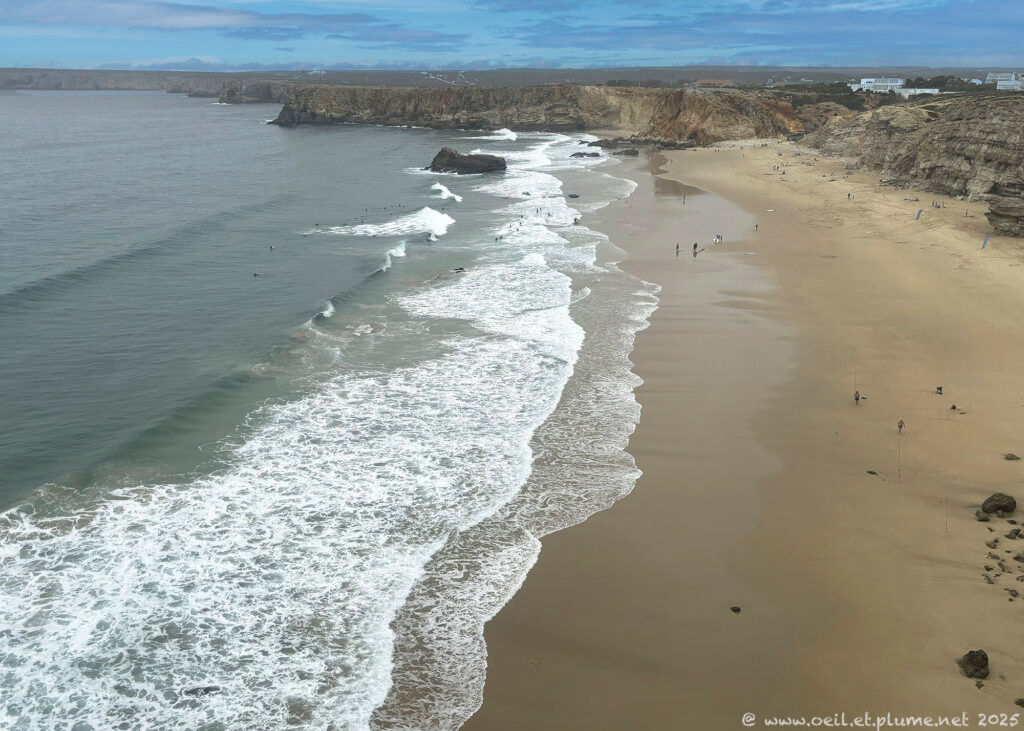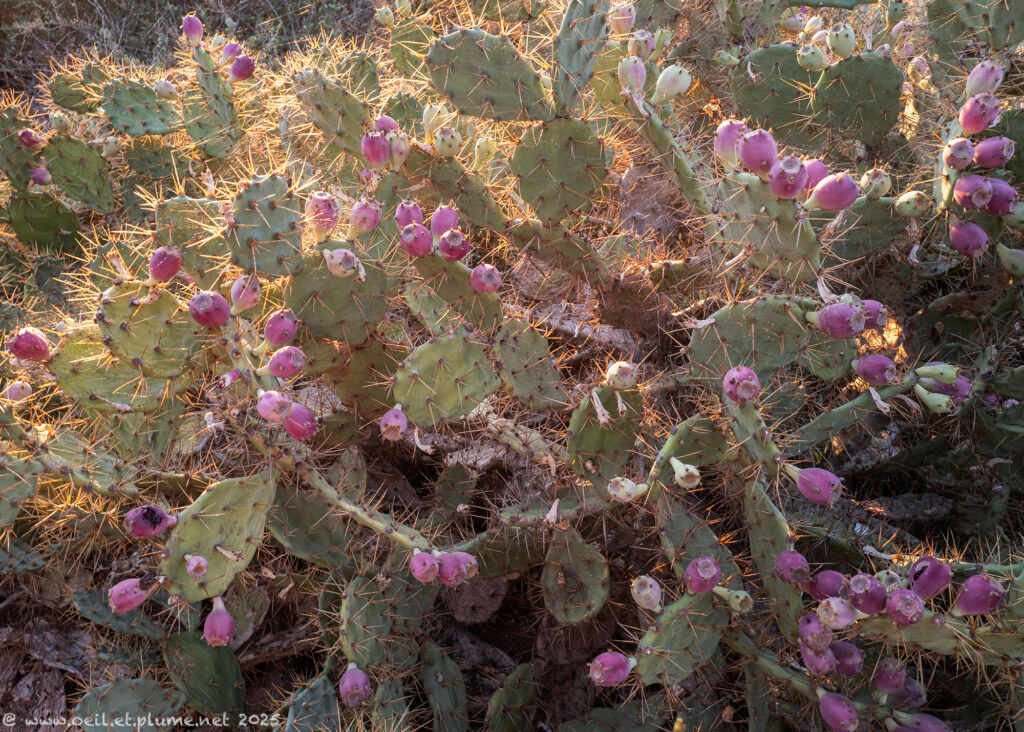Located near Tavira in Algarve, the Ria Formosa natural park consists in a beautiful labyrinth of barrier islands, sandbars, marshes and lagoons. At dawn, the ambiance is ethereal, evoking other planets and times. The area is a heaven for sea life.
Nearby, Santa Luzia – a humble fishing village – wakes up slowly but surely. A woman distributes graciously old bread to seagulls for their breakfast. Local fishermen are already back to their base, off-loading their catch of the night spent off shore: mackerel, seabass, seabream, dentex, grouper, but also octopus. Others explore the soft sand beach at low tide, looking for mussels.
The entire coast of Algarve is oriented to the Mediterranean sea and beyond. During the Portuguese Renaissance (15th-16th centuries), Tavira port town in Algarve served as logistic base for for the Portuguese maritime expeditions around the African continent as it was Portugal’s closest port to the Moroccan coast. In addition, Tavira grew as maritime trade hub, shipping salted dried fish, almonds and wine to northern Europe.
The region counts famous historical figures such as the mariner Bartolomeu Dias in the 15th century. Born in Faro district, Dias became in May 1488 the first European navigator to reach and cross eastward the cape located near today’s Cape Town in South Africa. During the outbound journey, the Portuguese explorer pioneered an efficient southward route in the open Atlantic Ocean, well off the western African coast.
In fact, Dias discovered the cape that he named “Cape of Storms” on his return to Portugal while sailing close to Africa’s southwestern coast. His naming was premonitory as he and his equipage perished near the location during a major maritime storm in May 1500.
Meanwhile, Portugal’s King John II had renamed the location “Cape of Good Hope” owing to the promising prospects of the new sea route to India and further east. In 1499, the Portuguese mariner Vasco da Gama had just completed the first-ever maritime return journey from Europe to Goa in India. In 1497, Dias helped designing and building da Gama main ships, and sailed with the convoy until Cape Verde Islands.
In the first half of the 20th century, tuna fishing and canning industry flourished in Tavira until its decline. The tuna fishing decline was partly due to the changing migration patterns of tuna fish and advancing silt in the river Gilão. However, marine aquaculture production developed in Algarve in the 1990’s in response the decline of off-shore fishing.
How not to mention here the salted and dried codfish (bacalhau) – emblematic food item in Portuguese cuisine. Salt cod has been produced for at least five centuries. Drying and salting codfish was necessary to preserve the food before modern refrigeration techniques. Furthermore, it makes the food tastier and helped conserving nutrients.
The apparent serenity of the small port could be misleading. Life is not easy for the local fishermen. Sea life shapes human faces very distinctively, owing to extensive exposition to air, sun and salinity. Life stories become somehow self-explanatory, hinting plenty of challenging and unforgettable experiences.
Similarly, the Mediterranean Sea carved Algarve’s coastline very strongly, eroding stone and land relentlessly. Huge sand expansions alternate with impossible rocky formations. When the daylight fades at dusk, the ruggedness of the marine landscape softens to create splendid natural sceneries.
Such serene raw beauty calls for artistic creativity. Some facets of Algarve’s artistic life will be explored in my next post.
Cheers,
